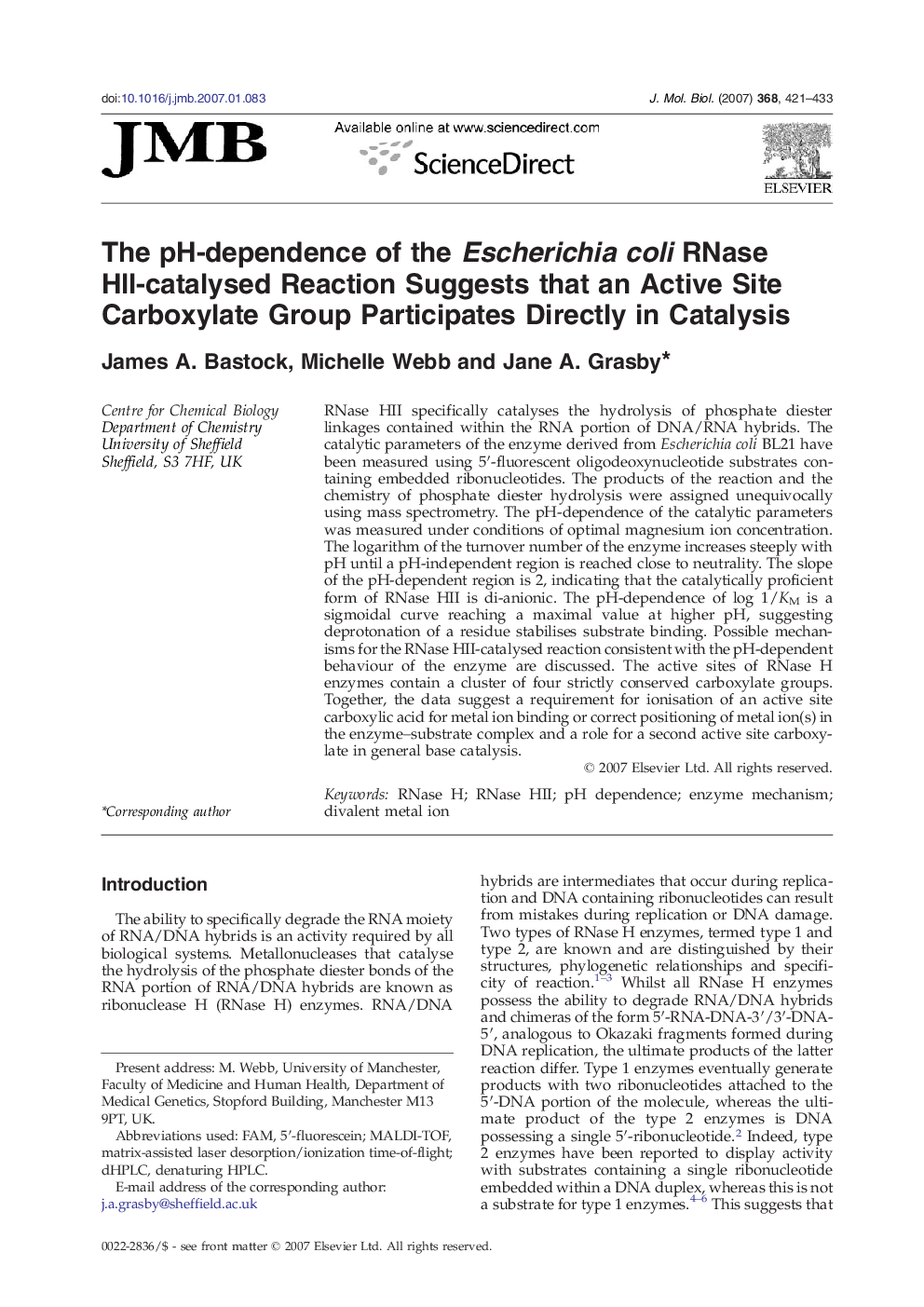| Article ID | Journal | Published Year | Pages | File Type |
|---|---|---|---|---|
| 2188673 | Journal of Molecular Biology | 2007 | 13 Pages |
RNase HII specifically catalyses the hydrolysis of phosphate diester linkages contained within the RNA portion of DNA/RNA hybrids. The catalytic parameters of the enzyme derived from Escherichia coli BL21 have been measured using 5′-fluorescent oligodeoxynucleotide substrates containing embedded ribonucleotides. The products of the reaction and the chemistry of phosphate diester hydrolysis were assigned unequivocally using mass spectrometry. The pH-dependence of the catalytic parameters was measured under conditions of optimal magnesium ion concentration. The logarithm of the turnover number of the enzyme increases steeply with pH until a pH-independent region is reached close to neutrality. The slope of the pH-dependent region is 2, indicating that the catalytically proficient form of RNase HII is di-anionic. The pH-dependence of log 1/KM is a sigmoidal curve reaching a maximal value at higher pH, suggesting deprotonation of a residue stabilises substrate binding. Possible mechanisms for the RNase HII-catalysed reaction consistent with the pH-dependent behaviour of the enzyme are discussed. The active sites of RNase H enzymes contain a cluster of four strictly conserved carboxylate groups. Together, the data suggest a requirement for ionisation of an active site carboxylic acid for metal ion binding or correct positioning of metal ion(s) in the enzyme–substrate complex and a role for a second active site carboxylate in general base catalysis.
